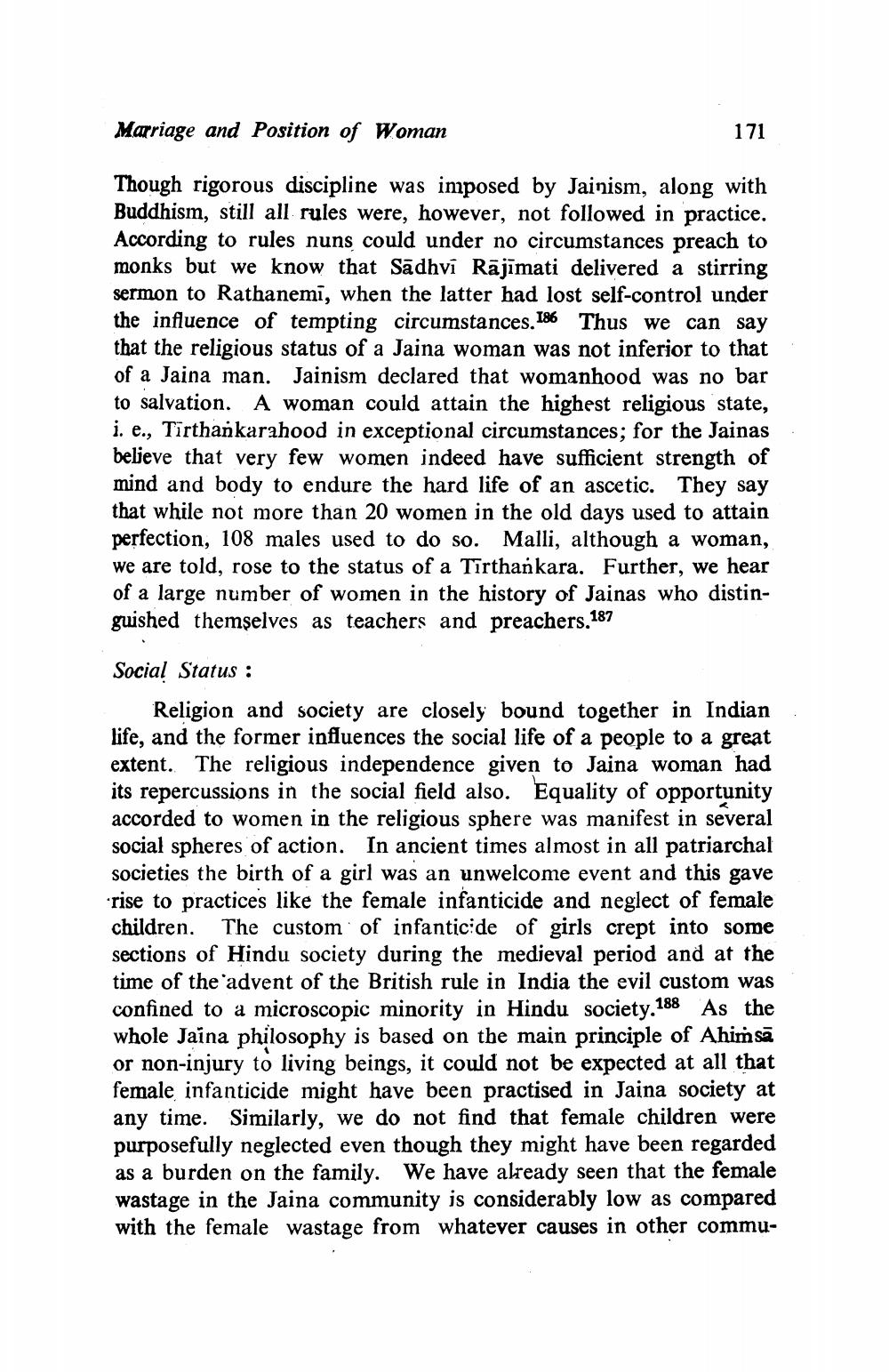________________
Marriage and Position of Woman
171
Though rigorous discipline was iniposed by Jainism, along with Buddhism, still all rules were, however, not followed in practice. According to rules nuns could under no circumstances preach to monks but we know that Sadhvi Rājīmati delivered a stirring sermon to Rathanemi, when the latter had lost self-control under the influence of tempting circumstances. 186 Thus we can say that the religious status of a Jaina woman was not inferior to that of a Jaina man. Jainism declared that womanhood was no to salvation. A woman could attain the highest religious state, i. e., Tīrthankarahood in exceptional circumstances; for the Jainas believe that very few women indeed have sufficient strength of mind and body to endure the hard life of an ascetic. They say that while not more than 20 women in the old days used to attain perfection, 108 males used to do so. Malli, although a woman, we are told, rose to the status of a Tirthankara. Further, we hear of a large number of women in the history of Jainas who distinguished themselves as teachers and preachers. 187
Social Status :
Religion and society are closely bound together in Indian life, and the former influences the social life of a people to a great extent. The religious independence given to Jaina woman had its repercussions in the social field also. Equality of opportunity accorded to women in the religious sphere was manifest in several social spheres of action. In ancient times almost in all patriarchal societies the birth of a girl was an unwelcome event and this gave rise to practices like the female infanticide and neglect of female children. The custom of infanticide of girls crept into some sections of Hindu society during the medieval period and at the time of the advent of the British rule in India the evil custom was confined to a microscopic minority in Hindu society.188 As the whole Jaina philosophy is based on the main principle of Ahi or non-injury to living beings, it could not be expected at all that female infanticide might have been practised in Jaina society at any time. Similarly, we do not find that female children were purposefully neglected even though they might have been regarded as a burden on the family. We have already seen that the female wastage in the Jaina community is considerably low as compared with the female wastage from whatever causes in other commu




